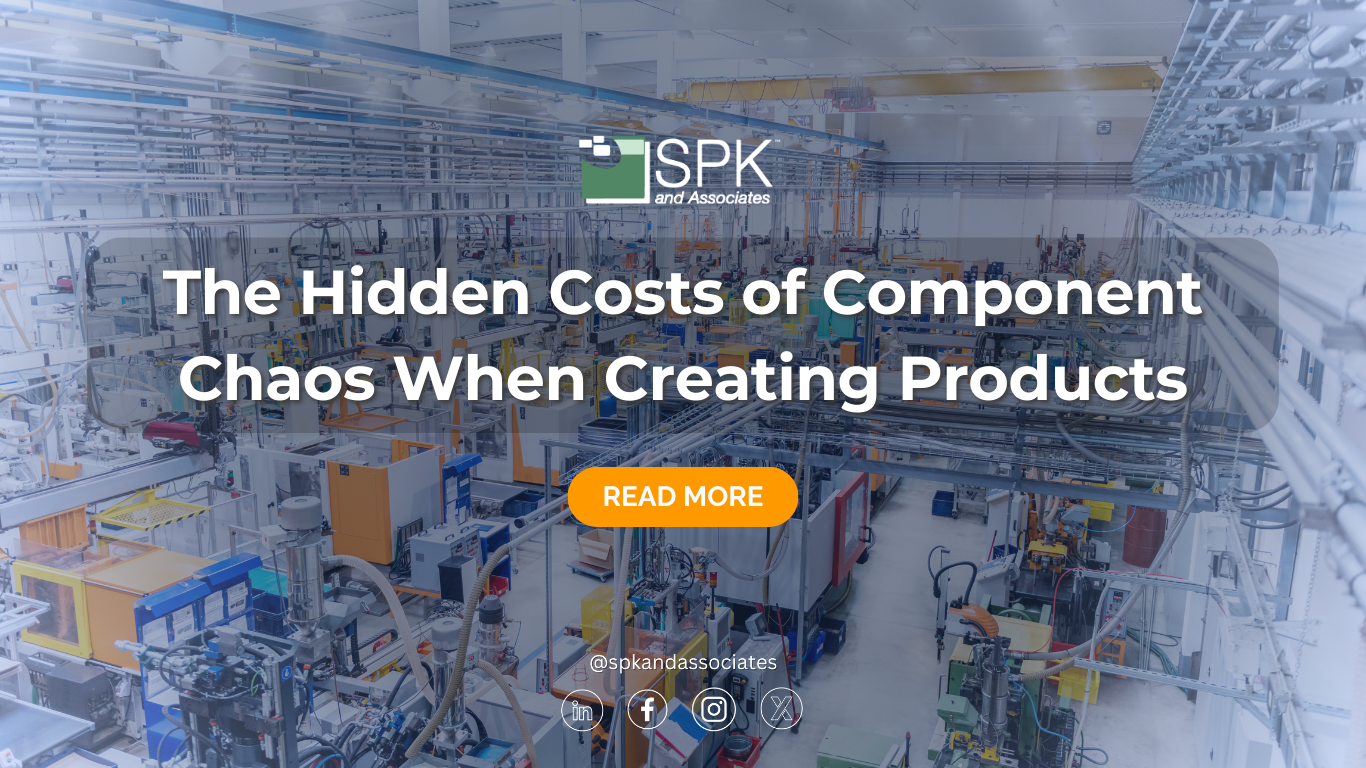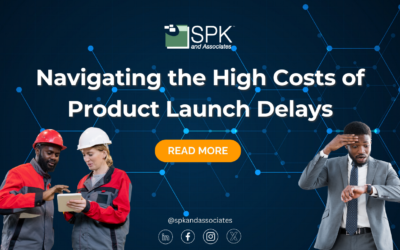Manufacturing success often hinges on efficiency and precision, yet many organizations unknowingly suffer from “component chaos.” This chaos occurs when poor parts and supplier management lead to wasted time, increased costs, and diminished revenue. Without proper governance, duplicate components, disparate suppliers, and unoptimized processes can wreak havoc across product lines. This chaos isn’t just a matter of inconvenience, but a significant operational and financial burden. Inefficient component management often results in lost revenue, inflated procurement costs, and supply chain disruptions. Fortunately, these challenges can be resolved with the right tools. In this blog, we will explore the cost of poor product management as well as how a comprehensive Product Lifecycle Management (PLM) solution such as Windchill can transform how companies manage parts, suppliers, and product data.

The Hidden Costs of Poor Component and Supplier Management
Poor component and supplier management can manifest in numerous ways, each carrying substantial costs:
Duplication of Parts and Work
Without proper parts management, engineers often run into issues such as creating multiple part numbers for identical components. This duplication complicates inventory management, increases procurement costs, and wastes valuable time and resources.
Fragmented Supplier Relationships
Relying on multiple suppliers for the same materials or components leads to unoptimized pricing and increased risk of supply chain issues. Misaligned supplier selection can delay production timelines and inflate costs.
Increased Procurement Costs
Sourcing components from unapproved suppliers or regions can lead to unnecessary expenses. Organizations often overpay for parts due to a lack of visibility into preferred or cost-effective options.
Lost Time and Productivity
Engineers frequently spend excessive time searching for parts or recreating designs due to poor visibility and unclear guidelines. This diverts attention from innovation and slows time-to-market.
Decreased Product Quality
Without proper part governance, organizations risk introducing subpar components into their products. This directly impacts product quality, leading to an increase in recalls, repairs, and customer dissatisfaction.
How Windchill Solves Component Chaos
Utilizing a PLM solution offering a centralized, efficient vault for all product data resolves the challenges that come with component and supplier management. PTC Windchill’s advanced capabilities for parts classification, supplier governance, and data traceability empower organizations to eliminate inefficiencies and optimize their processes. Here are a few ways Windchill does this.
Streamlined Parts Classification and Reuse
Windchill’s parts management capabilities allow engineers to classify components based on attributes such as material, size, and function. This makes parts easier to find, reuse, and manage across product lines. By reusing existing parts instead of continuously creating new ones, organizations can significantly reduce design time, costs, and duplication. This also improves sustainability.
Improved Searchability
Windchill’s faceted search feature enables users to quickly locate parts by filtering attributes and classifications. This can reduce search time by over 50%, allowing engineers to spend more time on innovation and less on mundane searches.
Optimized Supplier Management
With Windchill, organizations can integrate Approved Manufacturer Lists (AML) and Approved Vendor Lists (AVL) into a single system. This ensures that engineers select suppliers that meet quality, sustainability, and cost requirements. This helps them avoid costly mistakes and delays.
Enhanced Quality Assurance
Windchill enforces governance and traceability, ensuring that parts meet regulatory, sustainability, and performance standards. By vetting components for quality and compliance upfront, organizations can minimize risks and improve overall product reliability.
Reduced Costs
By consolidating suppliers, eliminating duplicate parts, and optimizing material selection, Windchill helps organizations significantly lower their Cost of Goods Sold (COGS). Additionally, its ability to identify backup parts ensures minimal disruptions in case of supply chain issues, further reducing operational risks.
The ROI of Efficient Component and Supplier Management
Organizations that invest in solutions like Windchill reap significant benefits such as:
- Accelerated Time-to-Market: Engineers spend less time searching for parts and more time innovating.
- Improved Sustainability: Windchill helps ensure compliance with sustainability goals by managing materials and components that meet environmental standards.
- Enhanced Collaboration: A unified system allows engineering and supply chain teams to work in sync, reducing miscommunication and errors.
- Cost Savings: Reduced duplication, optimized supplier relationships, and better parts reuse drive down costs.
Eliminate Component Chaos and Drive Efficiency with Windchill
Lost revenue, increased expenses, and inefficiencies due to component chaos can no longer be ignored. Organizations must prioritize parts and supplier management to remain competitive, delivering high-quality products. With Windchill, manufacturers gain a powerful tool to streamline processes, reduce costs, and enhance productivity. Contact us to learn how Windchill can eliminate component chaos, transforming your operations.












